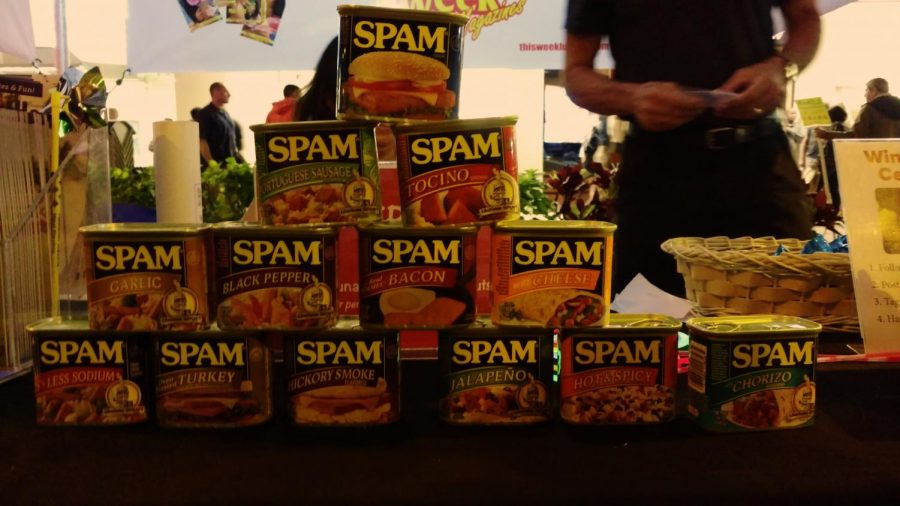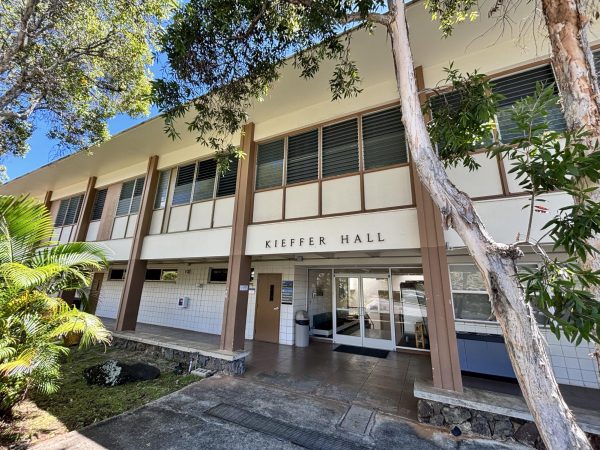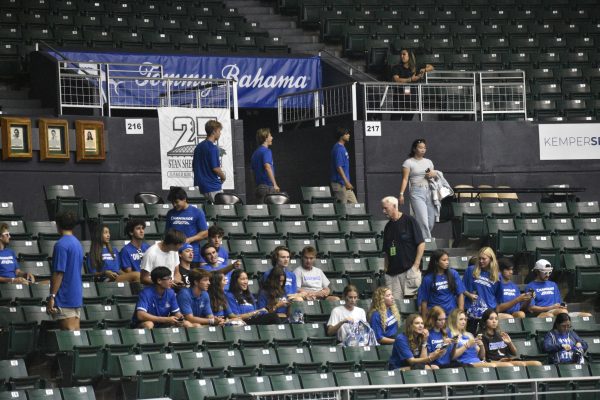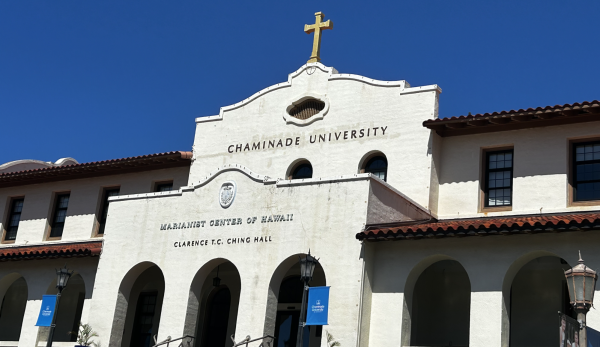Kalakaua Avenue Shuts Down for 16th Annual Waikiki SPAM Jam
Here are the many flavors of Spam.
Hawaii’s love for SPAM knows no bounds. This was the case at Waikiki’s 16th annual SPAM Jamon April 28.
With last year’s attendance at around 35,000, according to the SPAM jam website, this block party took up most of Kalakaua Avenue with many booths for restaurants and three stages of live entertainment. The restaurant booths consisted of local eateries, from various cultures, producing tasty SPAM creations. Eggs n Things served up mini haupia SPAM cheesecake, Buho Cantina had SPAM tacos and burritos, and BASALT served the award-winning SPAM monkey bread, created by Illinois cook Jim Cutler.
There’s usually a bias against SPAM due to the way it tastes.
“I hate SPAM. But, for some reason, there’s a whole festival dedicated to it so why not? I’m pretty sure these restaurants cook it better than I’ve ever did, anyway,” said Austin MacNulty, 29, from Mammoth Lakes, Calif.
All it takes is the right cook. Due to SPAM’s nonperishable nature, it was common for people to eat it straight out of the can, like the allied forces did during WWII. Unfortunately, eating it straight out of the can doesn’t do the taste any justice. According to The Huffington Post, SPAM from the can tastes like a cold chicken breast.
After tasting properly cooked spam, Macnulty stated, “Holy sh*t that’s awesome” after taking a bite out of the pineapple teriyaki SPAM burger from Mahaloha Burger.
Most residents in Hawaii can’t get enough of SPAM and always look for new ways to serve it.
“Grew up on SPAM. Can eat it for breakfast, lunc, and dinner,” said Brian Cortez, 40, from Kailua. “It’s one of the most flexible foods created and coming here always gives me new ideas on how to make it. It always gets a bad rap, especially from mainlanders but I think it’s one of the best tasting cheap meats on the market. Gotta love it!”
With 22 restaurants and 15 retailers, SPAM Jam catered to all tastes. The live entertainment included various local performers (bands, guitar/ukulele players) and halau displaying traditional hula dances. There were also booths for games, prizes, trivia and photo ops with the can of SPAM mascot.
Hawaii has always taken the top spot as the highest per capita of consumers of SPAM in the United States, according to the SPAM Jam website. Hawaii’s love of SPAM dates back to World War II. According to the SPAM website, as the military presence in Hawaii increased, there was a need for meat.
Unfortunately, trying to get fresh meat to Hawaii posed a huge challenge. In came SPAM. The manufacturers, The Hormel Corporation, shipped around 100 millions pounds of spam to feed hungry allied soldiers. Because of the sheer amount of spam sent, the military simply couldn’t eat it all.
SPAM ended up being sold to locals who have since incorporated spam into many unique dishes such as the ubiquitous SPAM musubi, created by Barbara Funamura of Kauai. Since then, SPAM has been a staple food for Hawaiian residents for decades and the SPAM Jam certainly showcases its versatility across all cultures.









